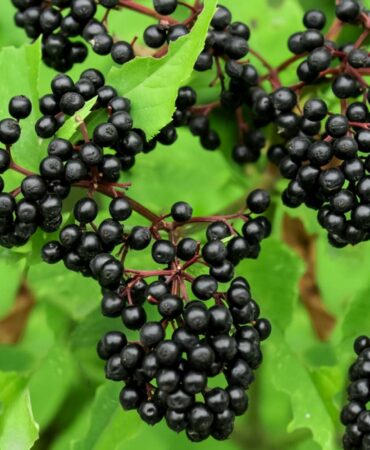Currently Empty: £0.00

Herb Histories: Onions – The ABCs of Allium cepa
Herb Histories are back! In her second blog, Helen takes us through the humble onion – an easy to cook, easy to grow, food staple hugely underrated and horribly overlooked by most of us, as she makes the case for. Once again, get your cuppa ready and settle down as Herb Histories with Helen begins…
Written by Helen Miller
Onions are recognised and known around the world. Most people cook with them on a regular basis. How did they become so common? And why do we put them in our food so often? Did people in older times know something that we’ve forgotten about Onion? (Let’s face it, the answer is going to be yes.)
What’s In A Name?
Use of Onions in England stretches back a long way but the plant being referred to is not always clear. In Anglo-Saxon times Onions were sometimes referred to simply as herba bulba with no English name. Most often it was called White Leek.7
The name Onion is thought to be from the Latin Unio, which could also be linked to the Welsh einion or “anvil”. The name of Unio in Latin referred to a round, white onion and this word was later corrupted to become the French oignon and from there the English “onion”.5
Our native Wild Onion is Allium vineale. Lots of places around the world have plants called ‘wild onion’ that are not A. vineale. The cultivation of A. cepa (the common onion) is unknown but if it was first cultivated in central Asia and north Africa it could have originally been from A. vineale which grows in both of those places, as well as in Europe.5, 6
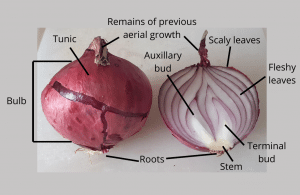
Anatomy: The Root Of The Matter
In botanical terms a bulb is a short shoot with thick fleshy leaves. Onions are tunicated bulbs meaning they also have a papery covering to protect the fleshy, internal leaves from damage and drying out4, so Onions are not a root as those are on the base of the Onion bulb. Although we are most familiar with the bulb of the Onion the leaves, flowers and seeds are also edible.
There are many Onion varieties. The Brown or Yellow Onion is the most often found in supermarkets and grocers, along with the White Onions that often still have the green stalks attached and Red Onions with a milder flavour that are good in salads. There are also Sweet Onions, which do have a sweeter flavour, as well as being larger than Brown Onions and with a flatter shape.
Then there are many more types of these four main types of Onion, as well as speciality Onions. To mention a few: Spanish Onions (a type similar to Yellow Onions), Bermuda Onions (a type of Sweet Onion grown on Bermuda), Torpedo Onions (a heirloom variety of the Italian Onion), Scallions (also known as Spring Onions or Salad Onions, each with a slightly different style!) and Pearl Onions (good for pickling).
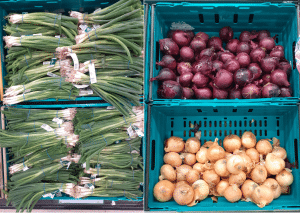
Best-friends Through the Ages
It is believed the Onion was domesticated or cultivated as long as 6,000 years ago, maybe even earlier. The first recorded mention of Onions was on ancient tablets from the Babylonian culture, 1700-1600 years BC around the area of present-day Iran. Onions are mentioned in the oldest Vedic writings of India and the Sumerians were growing and cooking Onions 4,000 years ago.5,9
In Egypt, Onions were used as long ago as 3,500 years BC. The Egyptians also worshipped the Onion because they thought the concentric rings of the layers of an Onion represented the universe and eternity. They placed whole Onion bulbs on the eye sockets of the dead, possibly because they thought the pungent smell would cause the person to breathe again, or because they knew of the Onions strong antiseptic quality.5,9
Onions are also described several times in the Bible and in sixth century Indian texts they are recorded as having remedial actions for the heart, joints and digestive illnesses. Before that, Hippocrates had recorded similar uses for the Onion in Greece and it was when the Romans conquered Greece that the vegetable we now think of as the Onion found its way to Britain, via the rest of Europe.5
In the Dark and Middle Ages Onions formed a staple part of most meals for the poorer people of Europe, along with beans and cabbage. During the Renaissance, Onions travelled with the explorers who planted them where they built colonies and used them as food and medicine5. Today Onions are cultivated in 170 different countries.9
Traditional Uses of Onions
Onions were a staple food for the people of England in Anglo-Saxon times and they valued them for their strong flavour and mild antiseptic action. Hung above doorways along with Garlic, they were believed to prevent those who passed through from infecting others. Combined with Sage, Onions were used to help digestion when people ate rich meats.7
In 1633, when John Gerard published his book, Herball, there were already many varieties of Onion recognised in England. 2 Gerard does not specify which ones should be used for treatments so the remedial effects of each Onion variety were presumably similar. Gerard says that if the juice of an Onion is sniffed up the nose it clears the head and results in a lot of phlegm being discharged. Onions were also used to treat gout, against the bite of a mad dog and if Onion juice was rubbed on the head of a bald person in the Sun, hair sprouted quickly. Apparently, the juice was also good for scalds from water or oil and burns from fire or gunpowder.2
According to Nicholas Culpepper, Onions were so well known the plant needed no describing. The uses were many and varied: to increase appetite and thirst, ease the bowels, help with bites from mad dogs or other venomous animals, get rid of worms in children and relieve coughs and help expel stuck or dry phlegm. Onion vinegar could be used to treat skin blemishes, and dropped into the ears Onions could be used to treat pain and tinnitus and Onion honey was thought to be good in treating asthma. Culpepper, and Gerard, also talk about Leeks as being similar to Onions but not as powerful.1
Moving forward to World War II, the Russians used Onions on battle wounds to act as an antiseptic 4. Mrs Grieve also lists Onions as good for using as an antiseptic and says a roasted Onion can be used to treat earache or tumours, an Onion syrup is good for coughs and colds and that Onions macerated in Hollands Gin are useful for treating gravel (stones in the urinary system) and dropsy (swelling caused by fluid retention).3
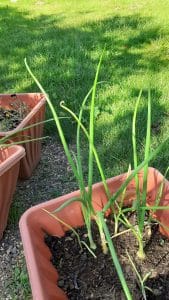
Modern Uses of Onions: Asthma, Bacteria, Cancer and DNA damage
Nowadays, Onions have been well studied and many of their medicinal actions have been put down to their numerous organosulphur compounds. These are the compounds such as allicin (found at higher levels in Garlic) and diallyl-sulphide which give Onions their distinctive aroma and flavour. Onions also contain other substances such as flavonoids, pectin, vitamins and fatty acids.6
It has been found that the flavonoids quercetin and kampeferol have strong anti-inflammatory and antibacterial activity and are also effective antivirals, particularly quercetin. Part of the process of an infection is an inflammatory response by the body, so the flavonoids can help alleviate infections in a number of different ways. This is interesting given that Onions have repeatedly been used for their antiseptic action and it has been known about since Egyptian times.6, 8
Another action for quercetin and the isothiocyanate (another sulphur-related compound) in Onions is inhibition of leukotrienes (inflammatory chemicals in the body). This action is thought to be why Onions have an anti-asthmatic effect, as noted by Culpepper.1
Quercetin has also been found to have a positive action against various types of cancers, although the mechanisms though which this occurs are not yet fully understood. There have been studies that found that the water and lipid-soluble sulphur compounds also have anticancer benefits6. A diet with Onions included has also been shown to prevent DNA damage and breakage.8
Onions clearly have many beneficial actions, a lot of which seem to have been forgotten. Maybe it’s time to give our well-travelled plant friend a little more attention?
Herb Histories is a new blog series that will be published every third Saturday of every month up until the end of the year. If you would like to be notified directly via email when the next chapter is available please send ‘Herb Histories please’ to blog@herbsociety.org.uk.
References:
- Culpepper, N. (1653) Culpepper’s Complete Herbal: consisting of a comprehensive description of nearly all herbs with their medicinal properties and directions for compounding the medicines extracted from them, W. Foulsham & Co., Ltd., London.
- Gerard, J. (1633) The Herball: A General Historie of Plantes
- Grieves, M. (1998) A Modern Herbal, Tiger Books International, London.
- Mauseth, J. D. (2014) Botany: An Introduction to Plant Biology, Fifth edition, Jones and Bartlett Learning.
- Mehta, I. (2017) Origin and History of Onions, IOSR Journal Of Humanities And Social Science, 22(9):7-10
- Pareek, S., Sagar, N. A., Sharma, S & Kumar, V (2018) Onion (Allium cepa L) in Fruit and Vegetable Phytochemicals: Chemistry and Human Health, Volume II, Second Edition. Edited by Elhadi M. Yahia, © 2018 John Wiley & Sons Ltd. Published 2018 by John Wiley & Sons Ltd.
- Pollington, S. (2011) Leechbook: Early English charms, plantlore and healing, Anglo-Saxon Books
- Shafiq, S., Shakir, M. and Ali, Q. (2017) Medicinal uses of Onion (Allium cepa L.): An Overview, Life Science Journal,14(6):100-107.
- Teshika, J. D., Zakariyyah, A. M., Zengin, T. Z. G., Rengasamy, K. R. R., Pandian, S. K. & Fawzi, M. M. (2018) Traditional and modern uses of onion bulb (Allium cepa L.): a systematic review, Critical Reviews in Food Science and Nutrition, DOI: 10.1080/10408398.2018.1499074

